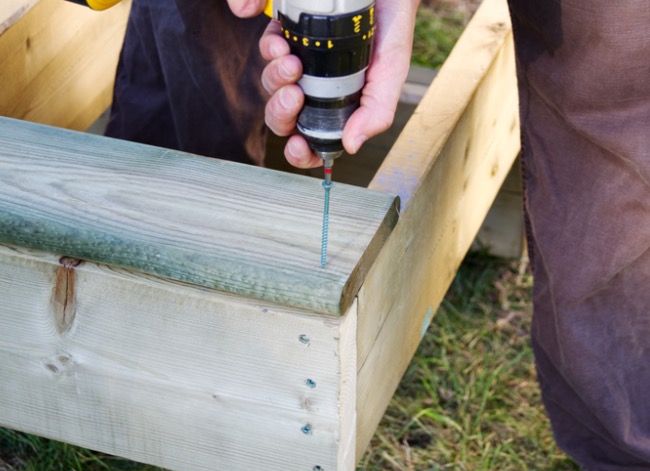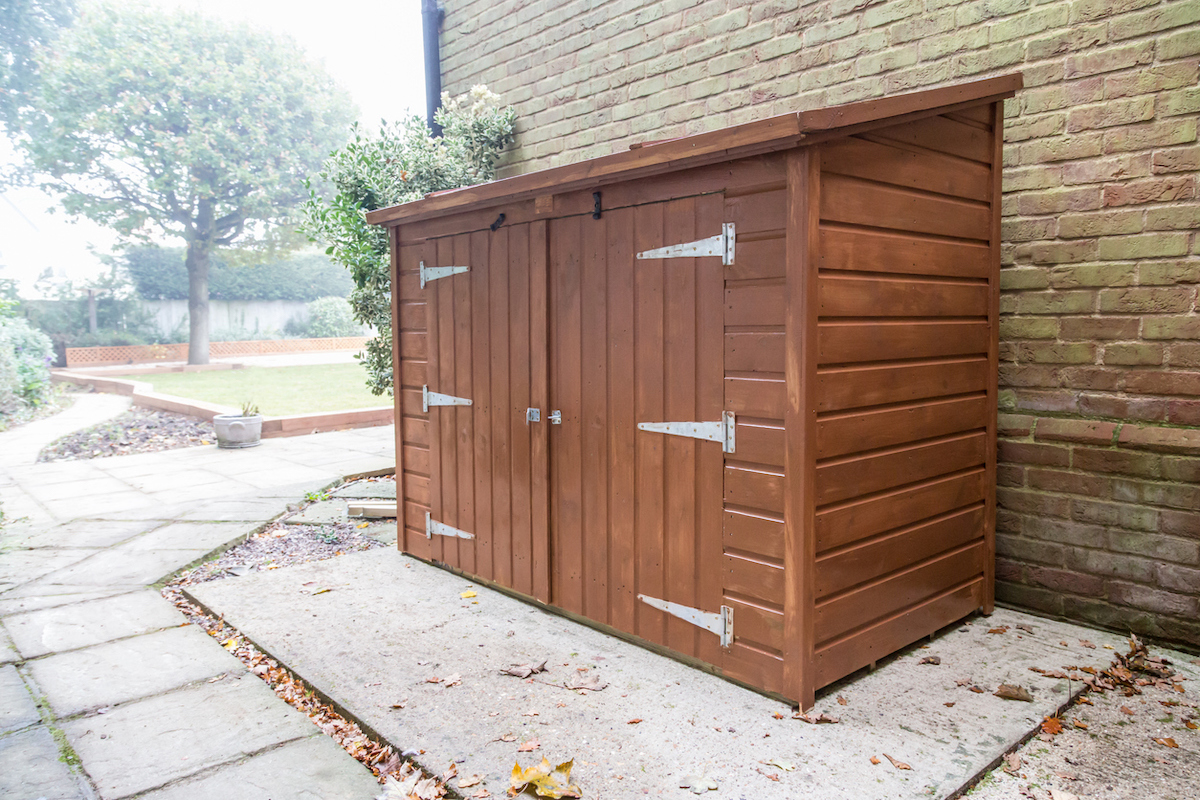

We may earn revenue from the products available on this page and participate in affiliate programs. Learn More ›
The lean-to shed is the classic backyard garden shed design. These sheds are less expensive than other shed styles, yet they can offer the same amount of interior storage for tools and equipment. Plus, their simple design makes them easy to build. It’s no wonder they’re so popular.
But there are six things you need to know before installing a lean-to shed at your home, and they will help you make a solid choice about location, design, and site prep. Keep reading so you will be ready to install the perfect lean-to shed in your backyard.
1. Lean-to sheds come in a variety of sizes but feature a similar shape.
The lean-to shed is an incredibly versatile design. At its core, the lean-to is a shed with four walls and just one slanted roof surface (instead of a gable roof with a centerline peak). They’re typically made from wood with large plywood doors, and they rarely have windows or many embellishments.
Because they’re so simple to construct, lean-to sheds are very easy to adapt to nearly any desired size. They can be as small as a 3-foot-by-3-foot garden shed that stands only a few feet tall or as large as necessary to house lawn mowers, snowblowers, and other large power equipment.
Regardless of the size and design, the distinguishing feature of any lean-to shed is the slanted roof. They can slope from side to side, front to back, or back to front.
RELATED: So, You Want to… Build a Shed
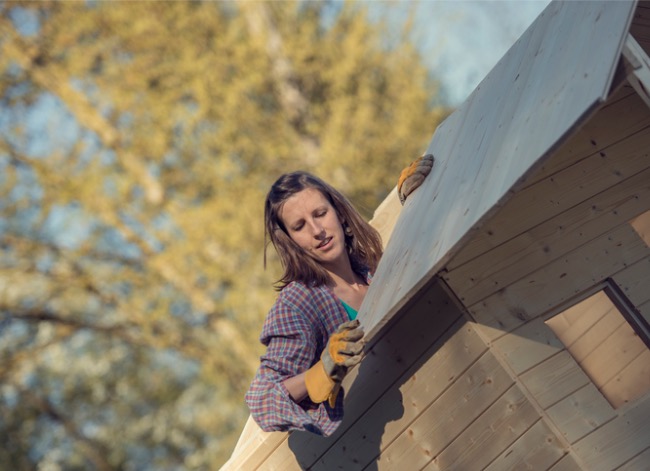
2. You can save on materials if the shed abuts an existing exterior wall.
Not only does the lean-to’s design make it a simpler and more affordable option than other shed types, it also allows the builder to make use of an exterior wall that’s available.
Many lean-to sheds are built because the room inside of a garage or barn is running low. Instead of building a completely new standalone structure, the builder can actually use the existing garage, barn, or home as the back wall of a lean-to shed, saving money on materials.
When a builder installs a lean-to against an existing wall, the roof always peaks on the existing wall and slants down toward the shed wall that runs parallel. With a bit of flashing at the roof-to-wall joint, this design allows rain and snow to run off the wall and down the shed roof, keeping it from working its way into either the shed or the existing structure.
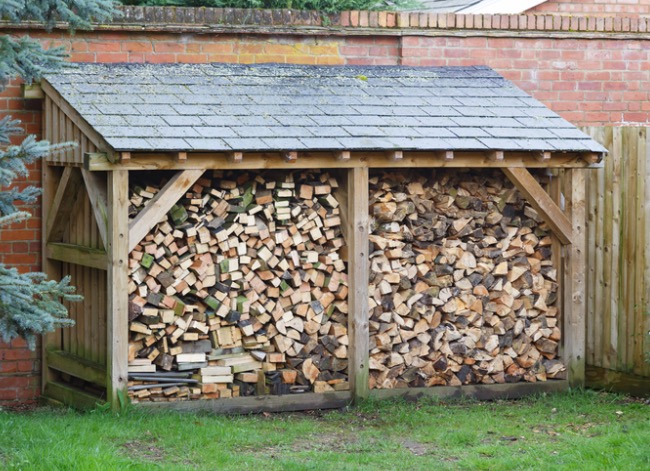
3. It should complement or accent your home’s exterior.
Lean-to sheds aren’t inherently attractive on their own. Most are simply plywood, roofing shingles, and some hardware. For that reason, consider dressing a shed up to complement or accent your home’s exterior.
The easiest way to blend a lean-to shed into your home’s exterior is to add similar trim and paint the plywood siding, as close to the home’s exterior as possible. It’s also entirely possible to use siding that matches your home’s current siding. However, if the lean-to shed abuts an existing wall, the color difference between faded and new siding might be more apparent.
You also can upgrade the shed a bit by matching the landscaping around it to the plants, flowers, and trees around your home.
4. Location is important.
As with any shed, finding the right location is important. While a lean-to’s design is flexible, and there are ways to blend it in with your existing home, there also are spots throughout the yard that won’t make a great location.
First, unless you’re okay with building a complicated foundation platform or pouring a large concrete pad, it’s better to find a flat surface than a sloped one. Also, avoid any areas in the yard that might remain wet and soggy longer than others after a rainstorm. When it comes to building against a structure, be sure to avoid blocking any utilities like electrical meters, gas lines, or water lines for both safety while digging and convenience for meter readers.
If you’re using an existing structure as a wall, consider the roofline. Aesthetically, lean-to sheds look best when the shed’s roof peak runs parallel to the existing roof’s peak. If it’s not possible, don’t consider it a deal-breaker.
RELATED: How To: Move a Shed
5. There’s flexibility with the foundation.
The foundation is important, but luckily, there is quite a bit of flexibility. Shed builders can choose between concrete slabs (which are excellent for lean-tos attached to homes), or wood flooring structures laid on gravel, concrete blocks, or even footings dug into the ground.
The simplest option is to find a level section of the yard, lay some landscaping paper, and pour a bed of gravel. Once compacted with a tamper, the gravel makes a solid surface for building a pressure-treated wood frame. Another option is using a level to place a series of concrete blocks (how many depends on the size of the shed). If the ground is particularly uneven, a combination of gravel and concrete pads can do the trick.
If the lean-to will abut a home or garage, a concrete pad is a more permanent option. This method involves building forms, mixing concrete, pouring the pad, and then attaching the walls directly to the pad’s surface with concrete anchors or screws. Concrete footings can be necessary for large sheds where a pad might not be feasible.
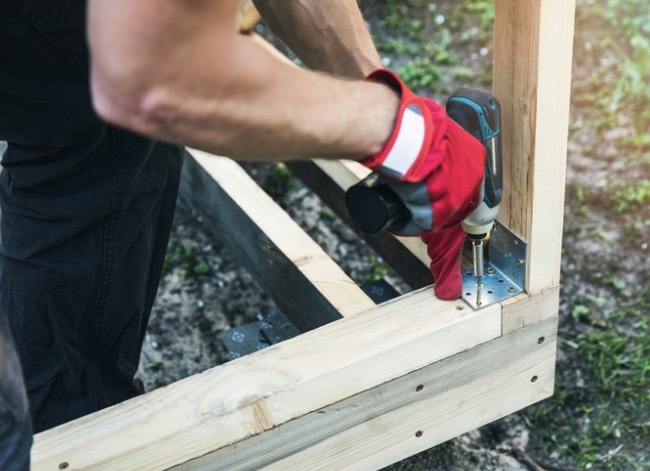
6. Local building codes can vary.
One of the most important and impactful considerations that shed-builders will have to navigate is local building codes. In general, most local building codes overlook sheds built on temporary foundations like gravel or concrete pads. On occasion, the addition of a concrete pad or footings will require the approval of building codes. Lean-to sheds built onto existing permanent structures almost invariably require permits.
The one code for which almost all municipalities require adherence has to do with the shed’s positioning on the property. Most towns and cities have “setback” requirements, which dictate how close to the property line you can build a structure. In some areas, the setback requirement might be just a few feet, while others might require 10 to 15 feet of space between the structure and the property line.
In some cases, an existing fence can alter the setback, so it’s essential to speak with the local building department before building a shed.
